
This is part of the 31 Days of Oscar Blogathon hosted by Aurora at Once Upon a Screen, Kellee at Outspoken and Freckled, and Paula at Paula’s Cinema Club.
The Story of G. I. Joe is a movie heralded by General Dwight D. Eisenhower as “the finest war film” he had ever seen, and it is indeed heartwarming that The Story of G.I. Joe is screened during the annual 31 Days of Oscar on TCM because it is one of those films that is not necessarily a blockbuster, but it based on historical moments written about and recalled by Ernie Pyle. It is one of those films that tied together the horrors of war, such as they could be revealed in the 50s, to the forefront of American sensibilities in the dark security of the neighborhood cinema. Men who had just returned from WWII wanted a film they could connect with, a film they could pin all their memories on, and The Story of G.I. Joe gave them one of those social events to connect with their pasts in the hedgerows, on the battlefield, on the PT Boats and in their hearts. In the fifties, going to the movies on a Friday or Saturday night was a celebration of the end to the work week, and many folks would go out to dinner, and then to a movie.
In 1944, Pulitzer Prize winning war correspondent Ernie Pyle wrote to his wife Geraldine Seibolds Pyle and told her: “Of course I am very sick of the war and would like to leave it and yet I know I can’t. I’ve been part of the misery and tragedy of it for so long that I’ve come to feel a responsibility to it or something. I don’t know quite how to put it into words, but I feel if I left it would be like a soldier deserting.”
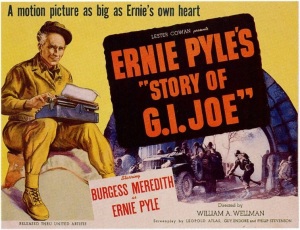
In the homey style of a personal letter to a friend, Ernest Taylor Pyle wrote articles about off the beaten track and remote places across America and the people who lived there. In 1940, he went to London in time to witness the great fire bombing at the end of December. When America entered World War II, he became a war correspondent for Scripps-Howard newspapers. He accompanied Allied troops on the invasions of Africa, Sicily, Italy, and France, using his homey reporting style to tell the story of the beaches and foxholes of World War II. Ernie Pyle humanized the most complex, mechanized, destructive war in history and told the stories of the men and women who fought it with empathy, humor, and sensitivity.
One of Ernie Pyle’s most widely read and reprinted columns, “The Death of Captain Waskow,” appeared when the Allied forces were bogged down at the Anzio beachhead in Italy in January 1944. Ernie wrote about the death of Captain Henry Waskow of Belton, Texas, an exceptionally popular leader in January 10, 1944. His men brought his body down from a mountainside by mule and placed it next to four others, but the soldiers didn’t want to leave Captain Waskow.
“The men in the road seemed reluctant to leave … one soldier came and looked down, and he said out loud, ‘God damn it.’ That’s all he said and then he walked away …
“Then a soldier came and stood beside the officer and bent over, and he too spoke to his dead captain, not in a whisper but awfully tenderly, and he said: ‘I sure am sorry, sir.’
“Then the first man squatted down, and he reached down and took the dead hand in his own, he sat there for a full five minutes … looking intently into the dead face, and he never uttered a sound all the time he sat there. “And finally he put the hand down, and then reached up and gently straightened the points of the captain’s shirt collar and then he sort of rearranged the tattered edges of the uniform around the wound and then he got up and walked away down the road in the moonlight, all alone.”
—Excerpted from the blog “History Because It’s There” by Kathy Warnes.
The story about “The Death of Captain Waskow,” however, almost couldn’t find the director it actually needed to help bring the poignant Pyle moments to the screen. Director William A. “Wild Billl” Wellman just happened to be a fighter pilot in WWI and had a deep-seated hatred of the infantry. His rigid aversion to directing a film about the infantry in WWII forced producer Lester Cowan to finagle and cajole him with Christmas presents for his children, invitations, and other tricks of a producer’s trade, but it was meeting Ernie Pyle himself at his home in Albuquerque and spending several days with him that actually convinced Wellman to saddle himself with the directorial duties.
The Story of GI Joe begins as Pyle joins C Company, 18th Infantry in North Africa, and the correspondent becomes close to the men and often writes about their exploits in his columns and would mention soldiers by name, which was much appreciated by both the soldiers and the soldier’s families back home. Pyle often followed and wrote about other units, but meets up again with C Company in Italy. Using actual American GIs in the film also added to the realism of the action.

After the film, the American veterans of the North African and Italian campaigns were transferred from the European Theatre to the Pacific, and many of them were killed in the fighting on Okinawa, the exact same battle in which Ernie Pyle was killed by a Japanese machine gunner. Pyle, hired as a consultant on The Story of GI Joe, and the transferred GIs never saw the film in which they had appeared. Pyle was one of the 36 American war correspondents killed in World War II.
Burgess Meredith, a protegee of playwright Maxwell Anderson (Anne of the Thousand Days) who hand-picked Meredith to star in Winterset, Meredith’s first screen role, stars as Ernie Pyle, and brings his war-weary eyes and quiet observance to the front as he slogs along and writes and feels what the men feel that he’s writing about.
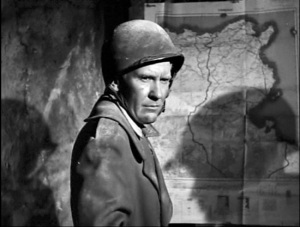
Meredith’s performance in this film resonates in his eyes. Watch them react, watch them disbelieve the painful realities, and watch them empathize with the men he has chosen as the subject of his craft.
When William Wellman dragged Robert Mitchum onto the screen from obscurity in Westerns like “Hoppy Serves a Writ,” he also gave us an actor to be reckoned with. Mitchum, as the man in charge of C Company, has already absorbed the painful moments of seeing men wounded in action or die while trying to advance to a new position closer to the enemy. His cynical nature is never uncaring, but always realistic. His death in the movie is the story of Captain Waskow.
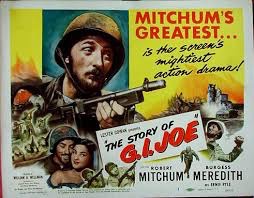
Mitchum’s screen roles would flirt off and on with World War II scenarios, like John Huston’s Heaven Knows, Mr. Allison in 1957, until the lalte 80’s when he apppeared as Victor ‘Pug’ Henry in The Winds of War and War and Rememberance.
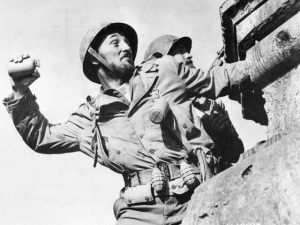
But Mitchum never again would be nominated for Best Supporting Actor or Best Actor at the Academy. The Story of G.I. Joe was nominnated for three other Oscars: Ann Ronnell for Best Song, “Linda”; Leopold Atlas, Guy Endore, and Phillip Stevenson for Best Screenplay, and Ann Ronnell and Louis Applebaum for Best Music for a Drama or Comedy.

To listen to the Oscar-nominated song, “Linda,” here’s a link: https://m.youtube.com/watch?v=6dJF7royh8c
Note: Wally Cassell, who played PVT. Dondaro in The Story of GI Joe is 99, and is considered the second oldest actor alive from the era of Classic Hollywood at the time of publication.
(The theme of the Turner Classic Film Festival 2015 is “History According to the Movies” and The Story of GI Joe would be an excellent choice for a screening this year, expecially with an introduction by Bill Wellman, Jr.)
BOOKS
(Also excerpted from Kathy Warne’s excellent references collected in her article about Ernie Pyle on the “History Because It’s There” website: http://historybecauseitshere.weebly.com/ernie-pyle-homespun-journalist.html )
Boomhower, Ray E. The soldier’s Friend: A Life of Ernie Pyle, Indiana Historical Society Press, 2006.
Miller, Lee Graham. The Story of Ernie Pyle. Greenwood Press, 1970. Nichols, David. Ernie’s War: The Best of Ernie Pyle’s World War II Disptaches. Simon & Schuster, First Touchstone Edition, 1987.
Tobin, James. Ernie Pyle’s War: America’s Eyewitness to World War II. Modern War Studies. University Press of Kansas, 1998.
Pyle, Ernie. Brave Men. Bison Books, 2001.
LINKS:
31 Days of Oscar Blogathon:
Once Upon A Screen: http://aurorasginjoint.com/2015/01/05/31-days-of-oscar-blogathon-2015/
Outspoken and Freckled:http://kelleepratt.com
Paula’s Cinema Club:http://paulascinemaclub.com/2015/01/05/call-for-posts-31-days-of-oscar-2015/
History Because It’s There, a blog by Kathy Warnes: http://historybecauseitshere.weebly.com/ernie-pyle-homespun-journalist.html
A History of G.I. Joe–the doll created by Hasbro: http://content.time.com/time/nation/article/0,8599,1915120,00.html

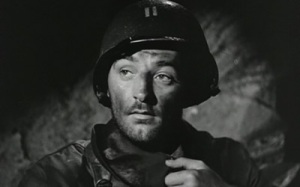
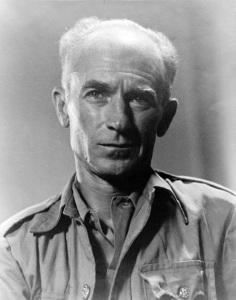
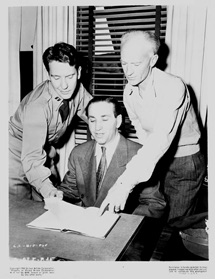



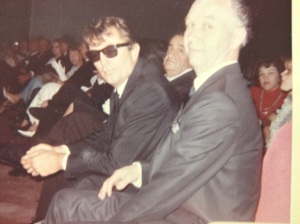
Pingback: 31 Days of Oscar Blogathon 2015 | Once upon a screen…
Pingback: 31 Days of Oscar: Pictures and Directors | Paula's Cinema Club
This is an incredible movie. Meredith and Mitchum are fantastic in their roles. So glad you featured this on your website; this film deserves more attention than it receives nowadays.
Thank you! I feel that it is such an important movie historically because Ernie Pyle collaborated with the production. The death of the Lt. Walker ( Mitchum) on film accurately depicts the actual death of Captain Henry Waskow from Belton, Texas, that Ernie Pyle originally wrote about in his column. I think that fact motivated me to write this article more than anything else.
Yes, I didn’t realize that Cpt. Waskow was the person Mitchum’s character was based on. I was glad to learn that from your post.
Ernie Pyle shared so many wonderful stories about many different kinds of Americans, both those at home, and at the front. Thank you!
I can’t believe I’ve never seen this one! After reading this, I need to fix that. After all, Ike certainly gave his stamp of approval. Great background and insight, Christy! Thanks again for joining our blogathon 🙂
Thanks, Kellee! I think you’ll the film when you have a chance to watch it. I love the diversity of topics presented for the blogathon entries!
Hi, Christy:
Excellent perspective on one the great WWII films!
Not the usual “Bang! Bang! Shoot ’em up!” fare. Though there are loud scenes within, More of a cross between ‘A Walk In The Sun’ with the raining, wet and miserable world occupied by Bill Mauldin’s Willie and Joe slogging across Europe from his classic tome, “Up Front!”.
Burgess Meredith easily occupies Ernie Pyle. As Robert Mitchum fulfills Captain Walker/Waskow with heart and world weary dignity. A talent he would hone in later films.
Thank you so much! I am glad you enjoyed it. I hope that Ernie Pyle and The Story of G.I. Joe won’t be overshadowed or forgotten.
Great review! Not my preferred genre but certainly a film I need to see. I love how the entire movie was developed to appeal to a very specific group.
Thank you so much! It was definitely crafted to illustrate some of Ernie Pyle’s most poignant experiences as a war correspondent.